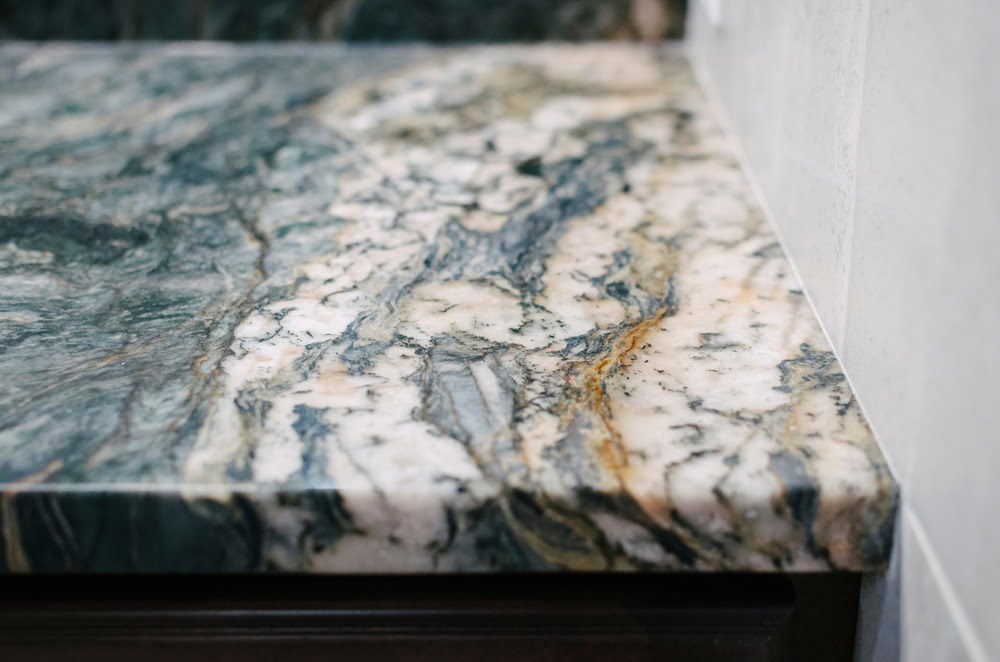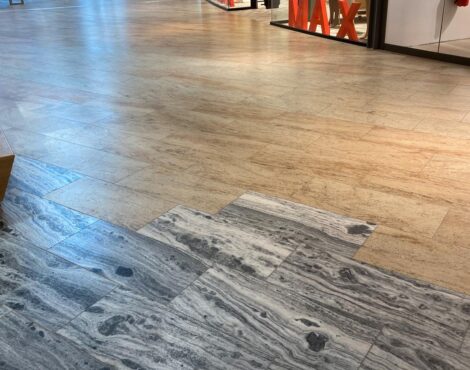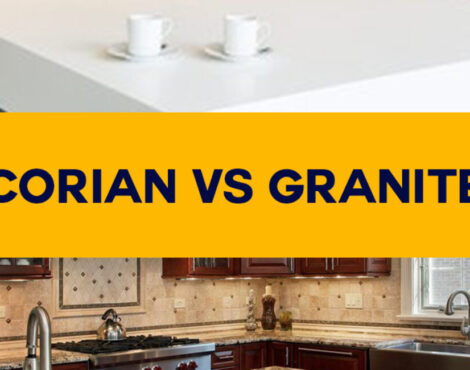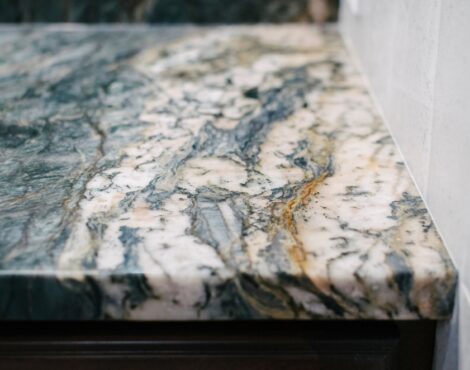In the real world of construction and design, the selection of materials is a critical decision that shapes the longevity, aesthetics, and functionality of a space. As we embark on a comprehensive comparison between granite and other materials, envision scenarios where the durability of a material determines its success.
Consider a bustling kitchen, where countertops bear the brunt of sharp knives, hot pots, and daily spills. Imagine a high-traffic foyer in a commercial space, where flooring withstands the constant shuffle of feet and potential stains from various sources. These scenarios illuminate the real-life challenges that construction materials face, highlighting the need for a nuanced understanding of key attributes.
Granite, a timeless favourite for its beauty and durability, is explored. We strive to help you make decisions by revealing its Mohs hardness, porosity, stain resistance, and wear & tear. Join us as we explore material selection to help you make informed decisions for your next building or repair project.
What Is The Hardness Of Granite?
Granite is used for many purposes because of its durability and hardness. Granite hardness is usually assessed using the Mohs scale, which classifies minerals from 1 to 10 based on scratch resistance against tougher materials. Granite is normally 6–7 on the Mohs scale.
Granite is harder than most everyday materials including glass, steel, and wood. Diamonds, the hardest mineral with a Mohs value of 10, are harder than it.
Granite is appropriate for high-traffic areas including kitchen countertops, flooring, and external cladding due to its hardness and scratch resistance. Granite is durable in many applications because its hardness reduces wear and tear.
We’ll see where is granite on the mohs scale compare to other materials, dealing with water (moisture), resisting stains, and holding up against normal wear and tear.
Natural Stones
Humans have utilized natural stones slabs, derived from elements in nature, for constructing structures due to their strength, beauty, and uniqueness. Common types of natural slabs, such as granite, marble, limestone, travertine, sandstone, and slatesonte, have been integral in construction for many years.
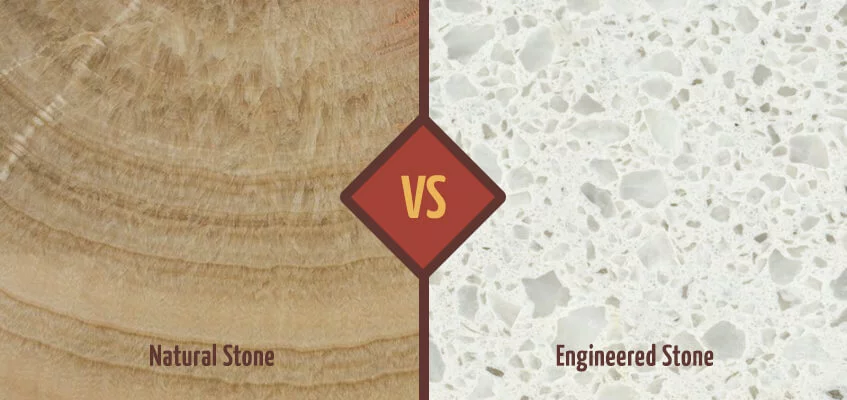
Engineered Alternatives
Manufacturers use engineered materials to craft artificial slabs, mimicking the texture and appearance of natural stone. These slabs are created using a combination of natural and synthetic elements. End-users appreciate their longevity, consistency, and practicality. Three well-received types of engineered slabs include quartz, porcelain, and ceramic.
We’ll check how these engineered materials measure up against granite in being tough, handling water, resisting stains, and lasting through daily use.
As we set the parameters for comparison, the material landscape becomes a canvas for informed choices.
READ | The Reason for Material Selection: Engineered Stone Vs Natural Stone
Comparison Parameters
When considering materials for your project, understanding the characteristics of granite in comparison to other options is crucial. This comprehensive comparison delves into key factors such as hardness, porosity, stain resistance, and wear & tear.
-
Mohs Hardness Scale
Friedrich Mohs created the scale of mineral hardness (Known as Mohs Scale) in 1812, assigning a number to indicate a mineral’s ability to scratch another mineral. The scale ranges from 1 (the softest, like talc) to 10 (the hardest, like diamond).
Granite, known for its durability, is measured on the Mohs scale. A comparison with other materials reveals its position, impacting its suitability for high-traffic areas and resistance to scratches.
ALSO READ | What Is The Hardness Of Granite? Understanding Granite Hardness on the Mohs Scale
-
Porosity
The level of porosity in materials influences their ability to absorb water. Granite’s low porosity enhances its resilience against moisture, a factor we’ll explore alongside alternatives.
ALSO READ | Is Granite Porous? or Non-porous or How Porous Is it?
-
Stain Resistance
Granite’s natural resistance to stains makes it a popular choice. We’ll examine how it fares in comparison with other materials in preventing and dealing with stains.
ALSO READ | Does Granite Stain? Understanding the Risks, Prevention & Solution
-
Natural Wear and tear
Assessing wear & tear is crucial for long-term durability. Granite’s performance in this aspect will be evaluated alongside other materials, providing insights into their respective lifespans.
These parameters provide a comprehensive framework, enabling a in-depth understanding of how granite, natural stone subsitutues, and engineered alternavives stack up in the context of construction and design.
Table Of Common Natural And Slabs And Tiles Used In Interior And Exterior Applications, Including Mohs Hardness Scale, Porosity, Stain Resistance, And Wear Resistance
Natural Stone Slabs: Hardness, Porosity, Resistance to Staining & Level of Wear and Tear
| Slabs/Tiles | Mohs Hardness Scale | Porosity | Resistance to Staining | Resistance to Wear & Tear |
|---|---|---|---|---|
| Granite | 6 to 7 | Low | High | High |
| Marble | 3 to 5 | High | Low | Low |
| Travertine | 4 to 5 | High | Low | Low |
| Limestone | 3 to 4 | High | Low | Low |
| Slatestone | 5.5 to 6.5 | Low | High | High |
| Sandstone | 6 to 7 | High | Low | Low |
| Quartzite | 7 | Low | High | High |
Engineered Stone Slabs: Hardness, Porosity, Resistance to Staining & Level of Wear and Tear
| Slabs & Tiles | Mohs Hardness Scale | Porosity | Resistance to Staining | Resistance to Wear & Tear |
|---|---|---|---|---|
| Porcelain | 7 to 8 | Low | High | High |
| Ceramic | 5 to 8 | Low | High | Low |
| Quartz | 7 | Low | High | High |
| Engineered Stone | 6 to 7 | Low | High | High |
| Terrazzo | 7 to 8 | Low | High | High |
| Glass | 5.5 to 7 | Low | High | Low |
Keep in mind that, when choosing a stone for a job, the Mohs hardness scale is just one factor to consider, even though it can assist in determining the stone’s hardness compared to others. When choosing a stone for a specific use, it’s important to consider porosity, stain resistance, and wear resistance. These factors can impact how well the stone performs and how long it lasts.
Furthermore, the attractiveness of a stone is subjective and can vary depending on the observer, their objectives, and how the stone is utilized. Therefore, when selecting a stone for a project, ensure you consider both its aesthetic appeal and functional suitability.
Conclusion
To sum up, it’s important to pick the right slabs or tiles for your space. This is important for how it looks and how well it works. To choose the right material for your needs, think about how hard it is, how porous it is, if it stains easily, and how well it holds up over time. It’s important to know about the different properties and maintenance needs of natural and engineered slabs or tiles. By doing this, you can make sure that your space looks nice and stays strong for a long time.
Stone Galleria
We offer more than just materials – we provide a partnership founded on reliability and responsiveness. Stone Galleria recognizes the distinctive requirements of commercial enterprises and is committed to delivering dependable and cost-effective supply chain management.
As a leading manufacturer, supplier, and exporter of Granite, Sandstone, and Quartzite, we tailor our products to your specifications, including dimensions, thickness, and various finishes.
Embark on the journey to enhance your operations by requesting a free quote today. Complete our inquiry form, and we will promptly respond to your needs.
Knowledgeable – Reliable – Responsive

